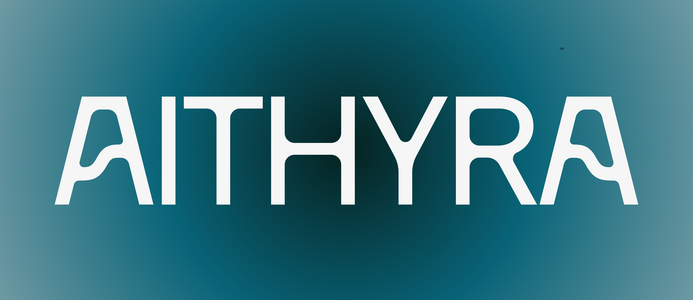Working in Kiel
Kiel - Germany's gateway to the Baltic

Kiel has also opportunities for academics working outside science, particularly in the field of economics © hpgruesen / pixabay.com
Kiel is the capital of the northern German state of Schleswig-Holstein and, next to Hamburg, the most famous port town. Its proximity to the water has shaped the city's past and still defines it as a commercial, sporting and academic centre. It has had an extremely interesting history. Kiel has been invaded a number of times, it also has been an important pawn in the process of German unification and the centre for a failed revolution. This being said, modern Kiel is a vibrant, wealthy city with plenty of opportunities in academia and industry.
Updated: 2023-06-13
Kiel as a research location
Academia in Kiel is renowned for its focus on marine science. The university (Christian-Albrechts-Universität zu Kiel) here was one of the first to see the unexplored territory which this field represented and has remained at the forefront of research in this area. There is, therefore, a wealth of opportunity for those wishing to work in this sector.
In 2019, two so-called "clusters of excellence" started: "Precision Medicine in Chronic Inflammation" and "ROOTS - Social, Environmental and Cultural Connectivity in Past Societies”.
Before, the university has been awarded funding for two 'clusters of excellence' and a graduate school by the German Universities Excellence Initiative, e.g. "The Future Ocean" which funded a number of research expeditions and has a particular interest in climate research. This institution had close ties with GEOMAR - The Helmholtz Centre for Ocean ResearchKiel, which conducts extensive research into ocean circulation, biogeochemistry, ecology and dynamics of the ocean floor.
The other organisations which have received special funding include the cluster of excellence, "Inflammation at Interfaces" (2007-2018), which conducted biological and medical research, and the Graduate School for Integrated Studies of Human Development in Landscapes. The latter of these two, along with the Leibniz Laboratory for Radiometric Dating and Stable Isotope, have taken elements of the environmental research, which Kiel is renowned for, and developed it further with research into the relationship nature has with humans and society, and their co-dependencies.
There are also opportunities for academics working outside science, particularly in the field of economics. Kiel plays host to the Leibniz Information Centre of Economics (ZBW). The Institute for Economics is also a prestigious organisation run by the university.
History
Since its founding in 1233 by the Count of Holstein, Kiel has played a major role in the wider area. It was quickly granted city rights, which allowed it to grow and flourish, aided still further by its acceptance into the commercial confederation, the Hanseatic League. For allegedly harbouring pirates, Kiel was thrown out of the League in 1518. As with many German universities, the University of Kiel was founded in the early modern period and has number of influential alumni such as the Nobel laureate, Theodor Mommsen, and Max Planck.
In the 1860's, the then Chancellor, Otto von Bismarck, ingeniously engineered the Prussian-Danish war by laying claim to both Schleswig and Holstein, the area which Kiel lies within, which had previously been split between the two states. This was one of the first steps in a succession of events which led directly to German unification. The next great milestone for Kiel came in 1918 where is was the site of the beginning of the November Revolution. This began as a mutiny among sailors, many of whom were posted in the city due to its large port, who did not want to be sent to fight in a war that was already lost. This rebellion was an important factor in deciding the structure of the new Weimar Republic.
Living in Kiel
Kiel has lots to offer its residents including one of Germany's largest shopping streets and an impressive infrastructure which is going to see further development in the coming years. But if the hustle and bustle of the town centre is not for you, Kiel is also home to a number of parks and two botanical gardens. There are also plenty of museums including galleries, military history museums and, unsurprisingly, the City and Maritime Museum, as well as theatres and the opera house. This means there's plenty to keep the residents of the town busy.
House prices in Kiel sit around the national average but it is going to cost a good bit more to find a flat in the popular districts of Schreventeich, Blücherplatz and Düsternbrook. These boast some lovely villas and tree-lined streets from the 1800's which are quickly snapped up when they come onto the market. The buildings of the local government can also be found in these areas, mainly in Düsternbrook. These residential areas escaped the bombing during the Second World War while the town centre was mostly destroyed. This means you can see a stark contrast between the two sides of the city and it provides a very characteristic fusion of old and new.
As the capital of Schleswig-Holstein it is no surprise that Kiel has extensive transport connections with trains taking passengers to many of the larger German cities. It is also very close to Hamburg meaning there is an airport nearby. As one of Europe's larger ports there are lots of opportunities to travel by boat and a number of passenger trips go up to Scandinavia, the Baltic States and Russia.
What Kiel is known for
Kiel is known in Germany as a sporting town. Although the local football teams have fallen from grace of late, the handball team in Kiel is one of the most successful in Germany. The stadia of these teams are also notable landmarks in the city. However, the town's greatest sporting claim to fame is in water sports, most notably sailing. The last two times Germany has hosted the Olympic Games, the sailing events have taken place in Kiel due the exemplary conditions on that bit of coast – and in 2023, the Volvo Ocean Race made a fly-by. The Kiel Week is an internationally famed regatta that attracts the greatest sailors from around the world and the festival, which accompanies it, is a big date in the cultural calendar.
Being so far north, Kiel lies securely in the area of Germany where Low German is spoken. As always in metropolitan areas it is hard to notice a particular accent but move out into the surrounding areas and you may find the German a little tricky to understand. Look out for the distinctive use of a 't' where there would usually be an 's' or 'p' where there would be an 'f'.
Advertisement








